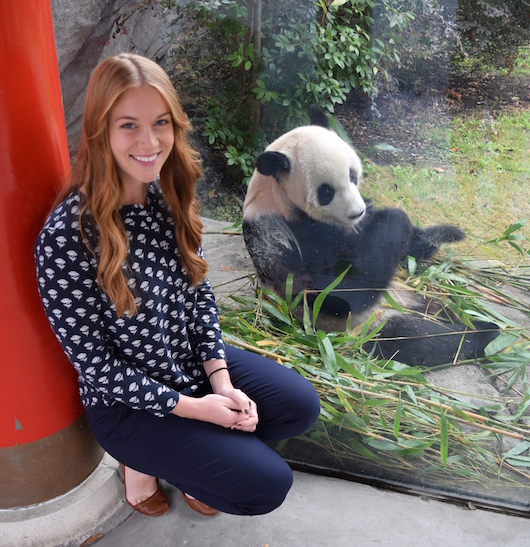Collaboration for Conservation
Add Summary

Aug. 24, 2017
Thomas Connor is a PhD student studying with Jack Liu. He's doing field work in and around Wolong, China.
I pick up the story of my PhD from Nanchong, China, where I have traveled to take a brief break from lab work to have meetings and an interview with representatives from the China Science and Technology Exchange Center (CSTEC).
This summer I am here in China on an East Asia and Pacific Institute Summer Institute, which is a joint program run by the National Science Foundation and CSTEC to fund American graduate students to conduct research in China. Nearly 30 other students traveled to China on this fellowship, and one of them, Abbey Wilson, is also studying giant pandas. Our host advisors, Jindong Zhang and Zejun Zhang (no relation), also work at the same institution – China West Normal University. We decided this summer was a great opportunity to collaborate in the field and in later analyses (and blog!). Since the two of us are based in Nanchong, CSTEC decided it would be worthwhile to make the trip and learn how the EAPSI program has been for us. Here on my last day in the city, it is my great pleasure to introduce Abbey Wilson, PhD candidate at Mississippi State University.
 Abbey: I am currently finishing up my fourth year investigating how giant pandas use scents to communicate with one another. My research focuses on identifying pheromones in captive giant panda urine, secretions, and the environment that help giant pandas locate mates during the breeding season. In addition to improving captive reproductive success, I aim to use the techniques we have developed with our captive research to locate free ranging giant pandas and understand how this species communicates across fractured habitats. This is what brings me to China this summer!
Abbey: I am currently finishing up my fourth year investigating how giant pandas use scents to communicate with one another. My research focuses on identifying pheromones in captive giant panda urine, secretions, and the environment that help giant pandas locate mates during the breeding season. In addition to improving captive reproductive success, I aim to use the techniques we have developed with our captive research to locate free ranging giant pandas and understand how this species communicates across fractured habitats. This is what brings me to China this summer!
Thomas: It has been fascinating for me to learn about a whole other realm of ecology and its application to very similar issues in conservation – specifically habitat fragmentation and the dispersal of animals across these fragmented landscapes. Our respective research also has the advantage of requiring similar field sites, so we were able to work together in the bamboo forests of Wolong. Any repeat readers will know that I am on the search for panda feces (specifically the DNA they contain) to study their movement and the effect of different landscape features and habitat fragmentation on gene flow, and I will let Abbey explain the details of her field work.
Abbey: Cross discipline conservation research has been a goal of mine since I began my graduate work. I am thrilled to be able to collaborate with such an excellent field biologist and his team of giant panda specialists. One aspect of my doctoral research investigates the possibility of collecting pheromones produced by giant pandas in the air. We know that giant pandas are able to track each other by scent, so we thought that we should give it a try! Giant pandas will scent mark and urinate on particular trees in the bamboo forest, leaving chemical cues for other individuals. We use solid phase microextraction fibers (SPME) to collect air samples from these popular scent-marking trees. These fibers act like sponges, soaking up any and all chemicals that are present in the air. We then use a gas chromatograph mass spectrometer to identify the potential pheromones giant pandas are leaving behind. By identifying these pheromones, our team hopes to provide novel methods for population cen



 Print
Print Email
Email








